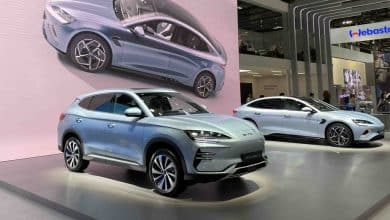
Hybrid vehicles were preparing to ensure the energy transition between the combustion engine and all-electric. However, the acceleration of the race to zero emissions risks reducing this interlude. Unless the authorities reconsider their decision to ban, as of the next decade, the sales of new vehicles powered by fossil fuels.
There is no doubt that the combustion engine has practically reached its optimum efficiency. Automatic shut-off when stationary, cylinder deactivation, more sophisticated injection system – to name only these three technologies – have certainly contributed to reducing the consumption of “conventional” engines and, by extension, the emissions they release.
Hence the role played by the “hybridization” promulgated by Honda and Toyota at the end of the last century. This innovation, which uses two motors, one thermal and the other electric, has been described as a “publicity gimmick1 “. The times are changing. Today, this technical advance is becoming increasingly necessary for car manufacturers to achieve the targets set by legislators in terms of environmental preservation.
minimum hybrid
In order to exploit all the possibilities which would make it possible to delay the end of the internal combustion engine, the traditional automobile brands have, today, almost all recourse to the power of the electric fairy. This manifests itself in different ways.
More than ever, manufacturers with large displacements in their catalog are resorting to light electrification of their thrusters. This essentially aims to relieve the internal combustion engine on start-up and during acceleration phases. This is the case with certain vans, of course, but also with elitist brands (Audi, BMW, Mercedes in particular) which assist their petrol engines with an alternator starter (frequently 48 volts) associated with a very small battery. This is recharged, without driver intervention, during the braking or deceleration phases. Although every gesture counts, this form of hybridization has a negligible impact on the environment. The savings in consumption are within a thimble (less than 1 L/100 km), but for the time being meet – and at little cost – the requirements of the authorities.
For more convincing gains, you have to go to the floor above. This is where we find the traditional hybrids that Toyota has championed for more than a quarter of a century now. These hybrids also do not require any special action to shine. They take advantage of a larger battery. This, in optimal conditions, makes it possible to travel over very short distances (about 2 km) in fully electric mode. This technology allows significant fuel savings, especially in town. On the fast lanes, the advantages are more modest, because the electric motor is less solicited to relieve the effort of the internal combustion one. The cost of this technology has dropped substantially in recent years, which means that the consumer makes it profitable more quickly, even if it no longer benefits from financial rebates from Quebec or Ottawa.
The best of worlds ?
The rechargeable hybrid, or PHEV (for Plug-in Hybrid Electric Vehicle), represents for many consumers the ideal compromise. This technology combines the advantages of the electric car and the gasoline car. The possibility of refueling in a few hours, on a terminal or a home socket, appears to be the best way to transition to all-electric. In addition to offering motorists the opportunity to familiarize themselves with recharging, it encourages them, without running the risk of running out of power, to adopt more eco-responsible behavior at the wheel.
With a battery capacity generally around ten kilowatt hours, a plug-in hybrid can travel more than 60 km (in the best cases) in fully electric mode. That said, this performance must be put into perspective. This is only realized if one submits to the obligation to regularly recharge this motorization having a wire at the wheel. This is an essential condition for the rechargeable hybrid to be truly virtuous. Recharging it on the move – it is possible – leads to overconsumption just as significant as driving with an empty battery. Many models currently on the market are eligible for government rebates, helping to amortize the higher price of this technology more quickly.
1. Opinion of a former president of Audi USA on hybrid technology












